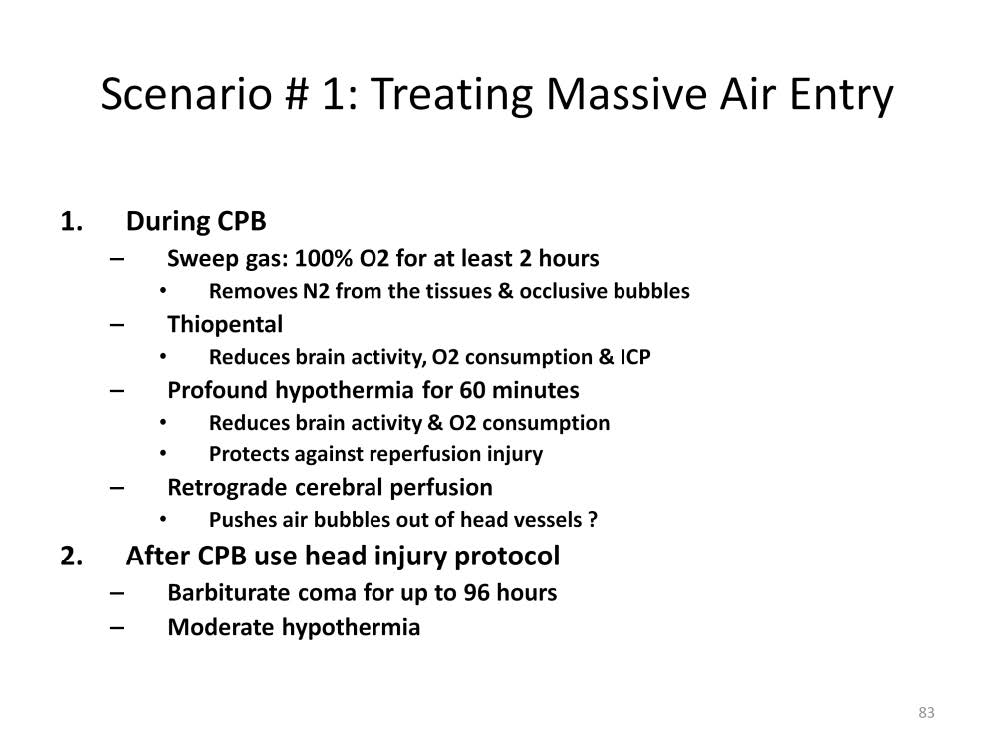
If a patient should suffer a massive air embolus on CPB, several steps should be rapidly taken:
High antegrade blood flow to the brain with cold, 100% oxygenated blood will probably remove the nitrogen more rapidly and effectively than the slower retrograde venous-to-arterial blood flow. The anesthesiologist may try to perform carotid compression as the embolus is occurring. But the reaction time would need to be almost instantaneous. Carotid compression is also of questionable benefit and may limit the anesthesiologist’s other timely and necessary responses.
Air embolism from the right side of the heart to the left side is often overlooked, but can occur in the presence of an unknown cardiac defect such as on open PFO or PDA or an unrepaired ASD or VSD. The air can enter the right side from an open intravenous or central line, from around the venous cannula purse strings due to siphon or vacuum assist or during a right atriotomy or ventriculotomy. During a true open heart procedure, the evacuation of air from the left side of the heart before the removal of the aortic cross clamp may be very difficult.

Perfusion Theory is an educational platform for the Oxygen Pressure Field Theory (OPFT). August Krogh’s theoretical concept of the oxygen pressure field is explained and then applied to clinical applications in perfusion practice.